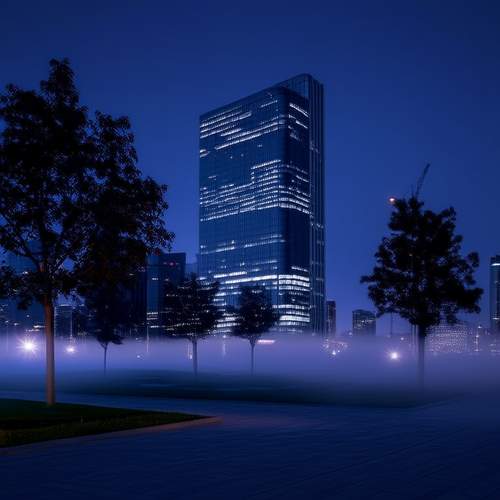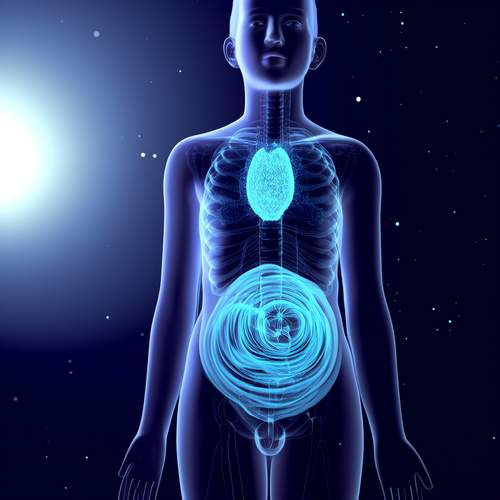The realm of sleep has long fascinated scientists and laypeople alike, particularly the mysterious phase known as rapid eye movement (REM) sleep. This stage, characterized by darting eyes beneath closed lids, vivid dreams, and heightened brain activity, stands in stark contrast to the deep, restorative slumber of non-REM sleep. While the exact purpose of REM sleep remains debated, its significance in cognitive function, emotional regulation, and memory consolidation is undeniable. Researchers continue to unravel the complexities of this sleep phase, revealing its profound impact on our waking lives.
One of the most striking features of REM sleep is the paradoxical state of the brain during this phase. Despite the body being largely immobilized—a protective mechanism known as REM atonia—the brain exhibits activity levels comparable to wakefulness. Electroencephalogram (EEG) readings show rapid, low-voltage waves resembling those of an alert mind. This neural hyperactivity suggests REM sleep plays a critical role in processing information and emotions from the day. Some theories propose that the brain, free from external stimuli during REM, engages in a form of overnight therapy, sifting through experiences and attenuating emotional charges attached to memories.
The cyclical nature of REM sleep throughout the night further underscores its importance. In a typical sleep architecture, REM periods grow progressively longer with each cycle, with the final REM stage before waking sometimes lasting up to an hour. This graduated pattern implies that later REM phases may serve different functions than earlier ones. The initial REM episodes might focus on memory consolidation—sorting and storing new information—while later episodes could prioritize emotional processing or creative problem-solving. This evolving dynamic highlights the sophistication of our sleep biology and its tailored approach to mental maintenance.
Dreams, the most conspicuous byproduct of REM sleep, offer a window into this enigmatic process. While dreams occur in other sleep stages, REM dreams tend to be more narrative-driven, emotionally intense, and bizarre. This qualitative difference suggests REM dreams might serve as a testing ground for the brain to simulate scenarios, process conflicts, or integrate disparate ideas. The peculiar nature of REM dreams—with their illogical sequences and heightened emotions—could reflect the brain's attempt to make sense of fragmented memories and emotions without the constraints of waking logic.
The consequences of REM deprivation reveal much about its necessity. Studies show that when individuals are selectively deprived of REM sleep (awakened whenever entering this phase), they experience increased irritability, difficulty concentrating, and emotional volatility. More remarkably, in subsequent sleep sessions, the body rebounds with more intense and frequent REM periods—a phenomenon called REM rebound. This compensatory mechanism suggests REM sleep fulfills essential functions that the brain prioritizes when deprived. Chronic REM deficiency has been linked to more severe outcomes, including impaired memory, reduced problem-solving abilities, and increased risk of mental health disorders.
Neurologically, REM sleep appears to facilitate communication between different brain regions. The hippocampus, crucial for memory formation, shows particularly intense activity during REM, likely transferring information to the neocortex for long-term storage. Simultaneously, the amygdala—the emotional center—fires vigorously, possibly explaining the affective nature of REM dreams. This coordinated neural dialogue may underlie REM's role in both cognitive and emotional processing. The prefrontal cortex, responsible for logical thinking, remains relatively quiet during REM, which could account for the uncensored, often irrational nature of dreams.
From an evolutionary perspective, REM sleep presents an intriguing paradox. The temporary paralysis during this phase leaves animals vulnerable to predators, while the heightened brain activity consumes considerable energy. Such costs would only persist if REM conferred substantial survival advantages. Some scientists speculate that REM's simulation of threatening scenarios—evidenced by the prevalence of chase or attack dreams—may have served as nocturnal training for real-world dangers. Others propose that REM's role in fostering cognitive flexibility and creativity provided early humans with adaptive benefits in problem-solving and social cohesion.
The relationship between REM sleep and mental health continues to be an area of intense research. Numerous psychiatric disorders, including depression and PTSD, show disruptions in REM patterns—often exhibiting earlier and more prolonged REM periods. Some antidepressants suppress REM sleep, yet patients often experience mood improvement, challenging simplistic correlations. This complex interplay suggests that while REM abnormalities may contribute to certain disorders, REM sleep itself isn't inherently detrimental. Rather, the quality and timing of REM phases likely interact with individual neurochemistry in ways we're only beginning to understand.
Modern lifestyle factors increasingly interfere with natural REM cycles. Artificial light, irregular sleep schedules, alcohol consumption, and certain medications can all suppress or fragment REM sleep. The prevalence of sleep disorders like apnea—which repeatedly pulls sufferers out of REM—further compounds the problem. As society grows more sleep-deprived, the loss of REM may have subtle but cumulative effects on emotional resilience, creativity, and cognitive performance. Recognizing the value of uninterrupted sleep, particularly REM-rich late morning hours, could prompt meaningful changes in how we structure our days and nights.
Emerging research continues to refine our understanding of REM sleep. Advanced neuroimaging reveals intricate patterns of connectivity during REM that differ markedly from wakefulness. Studies on REM's role in forgetting—actively pruning unimportant memories—suggest a sophisticated curation process. The discovery that thermoregulation shuts down during REM, making humans uniquely vulnerable to temperature fluctuations, adds another layer of mystery. Each finding peels back another corner of the REM enigma, showing it to be not merely a passive state but an active, purposeful component of our biology.
As science probes deeper into the REM cycle, practical applications begin to emerge. Some researchers explore optimizing learning by timing study sessions before REM-rich sleep periods. Others investigate whether enhancing REM sleep could alleviate certain mental health symptoms. The burgeoning field of sleep technology aims to track and potentially influence REM phases through wearable devices. While manipulating sleep architecture raises ethical questions, the potential to harness REM's natural benefits—for memory, emotional health, and creativity—remains an enticing frontier.
The study of REM sleep ultimately reflects our broader quest to understand consciousness itself. In this liminal state between sleep and wakefulness, where reality bends and the mind wanders unfettered, we glimpse the remarkable plasticity of the human brain. Far from being mere neurological static, the REM cycle appears to be an intricate dance of memory, emotion, and imagination—a nightly rehearsal that shapes who we are when awake. As research continues, each discovery about REM sleep reveals not just the workings of a sleep phase, but the very mechanisms that make us thinking, feeling, dreaming beings.

By /May 21, 2025

By /May 21, 2025

By /May 21, 2025

By /May 21, 2025

By /May 21, 2025

By /May 21, 2025

By /May 21, 2025

By /May 21, 2025

By /May 21, 2025

By /May 21, 2025

By /May 21, 2025

By /May 21, 2025

By /May 21, 2025

By /May 21, 2025

By /May 21, 2025

By /May 21, 2025

By /May 21, 2025

By /May 21, 2025

By /May 21, 2025

By /May 21, 2025